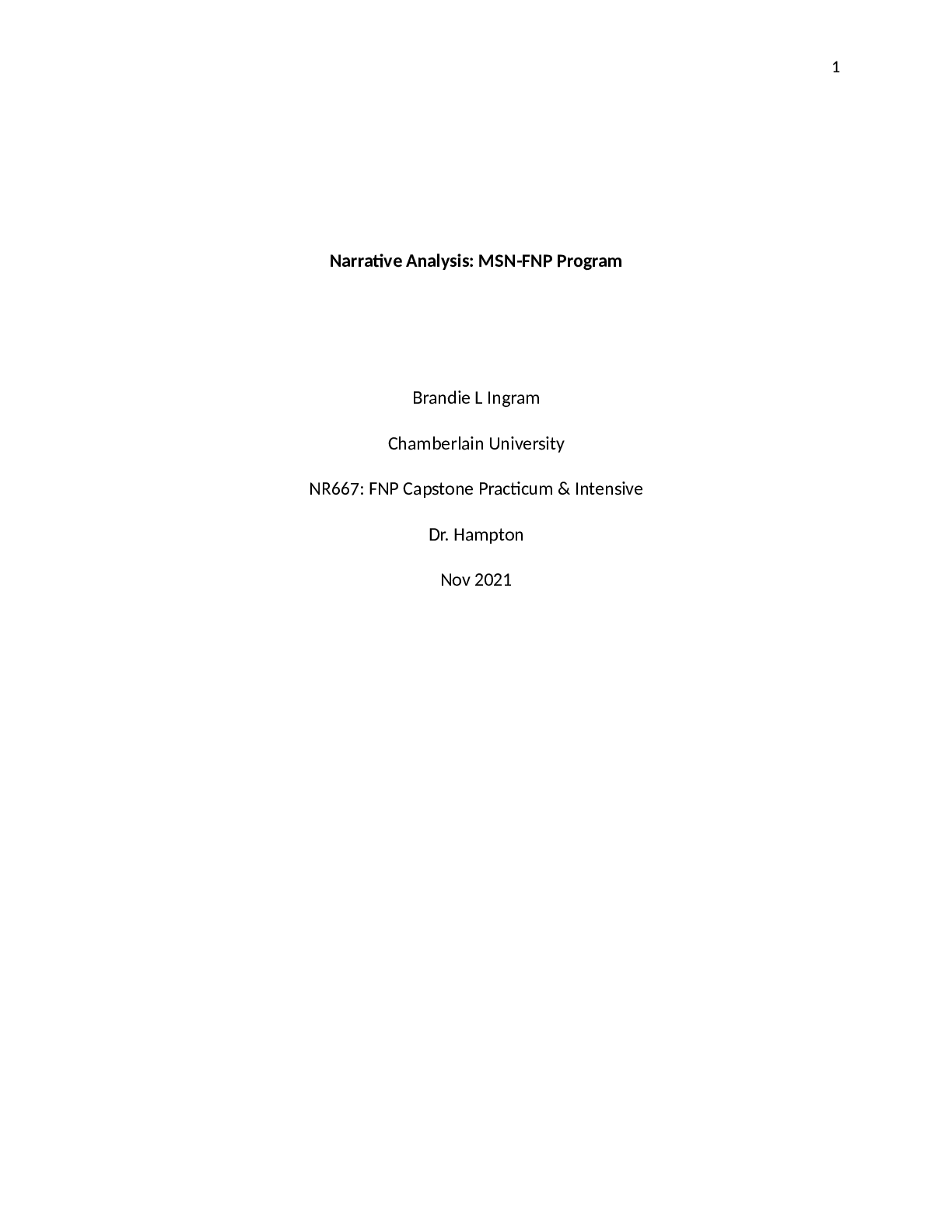Narrative Analysis: MSN-FNP Program
Before the completion of the program, a narrative analysis is to be completed by
summarizing and demonstrating how Chamberlain University's Master of Science in Nursing
(MSN) program Family Nurse Practitioner (FNP) track has prepared its graduates. In this
analysis, an evaluation is completed to assess how each program outcome correlated with the
assignments from each class. In this review, I will summarize the evaluation of my own
professional growth and development as a graduate student in the cognitive, psycho motor, and
affective domains as it pertains to this program. I will also summarize the evaluation of my own
professional growth and development as it pertains to the American Association of Colleges of
Nursing (AACN) MSN Essentials for Graduate Education and the National Organization of Nurse
Practitioner Faculties (NONPF) Competencies. Lastly, I will reflect how my own cultural
competencies have been transformed.
How Each Artifact Meets MSN-FNP Program Outcomes
There are five program outcomes in the Chamberlain College of Nursing Family Nurse
Practitioner program. These program outcomes are expected to be met by all students and they
include: 1. Provide high quality, safe patient centered care grounded in holistic health principles,
2. Create a caring environment for achieving quality health outcomes, 3. Engage in lifelong
personal and professional growth through reflective practice and appreciation of cultural
diversity, 4. Integrate professional values through scholarship and service in health care, and 5.
Advocates for positive health outcomes through compassionate, evidence-based, collaborative
advanced nursing practice (Chamberlain University, 2021).
3
AACNS MSN Essentials
The American Association of Colleges of Nursing developed nine Essentials of master’s
Education as a guide for the graduate nurse to work in various health care settings (AACN,
2021). The nine essentials are 1. background for practice from science and humanities, 2.
organizational and systems leadership, 3. quality improvement and safety, 4. translating and
integrating scholarship into practice, 5. informatics and healthcare technologies, 6. health policy
and advocacy, 7. interprofessional collaboration for improving patient and population
outcomes, 8. clinical prevention and population health for improving health, and 9. masters
level nursing practice (AACN, 2011). Throughout this program, I have grown into a more
confident leader and disseminator of patient education. I am ready to portray myself as a more
confident nurse and nurse practitioner. As an inpatient nurse over the last 18 years, the AACN’s
essentials ought to be the framework for how hospitals should operate. By using science and
humanities to make the best clinical decisions, it would allow for better patient outcomes and
improve quality and safety. Through great organizational and systems leadership, staff
satisfaction would be high all while caring for our patients in a more compassionate way.
Read More

